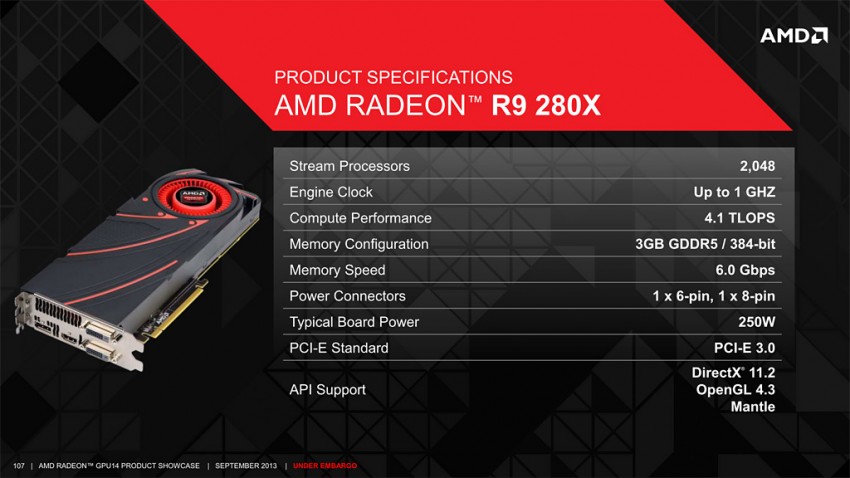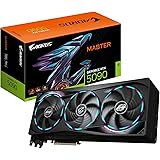The AMD R9 280X, released in 2013, was a high-end graphics card based on the Tahiti architecture. It quickly became popular among gamers and, notably, cryptocurrency miners. Its technical specifications played a crucial role in its suitability for mining various cryptocurrencies.
The R9 280X featured a clock speed of 1000 MHz, paired with a memory bandwidth of 288 GB/s. Its 3GB of GDDR5 memory and 2048 stream processing units, organized into 32 compute units, made it a powerful contender for parallel processing tasks such as mining.

Mining Hashrates and Algorithm Performance
The card’s ability to perform complex calculations made it effective for mining algorithms prevalent during its peak popularity. It achieved varying hashrates across different algorithms:
One of the algorithms the R9 280X excelled at was Lyra2REv2. This algorithm is used by cryptocurrencies like Verge (XVG), Vertcoin (VTC), and MonaCoin (MONA). The R9 280X could achieve approximately 14. 6 MH/s on this algorithm. Lyra2REv2’s memory intensity suited the architecture of the R9 280X. This made it an efficient option for mining these particular cryptocurrencies.
Another algorithm commonly used for mining with the R9 280X was DaggerHashimoto. This algorithm is used by Ethereum (ETH) and Ethereum Classic (ETC). The R9 280X could achieve around 14. 42 MH/s on DaggerHashimoto. In the early days of Ethereum mining, the R9 280X was a popular choice. This was due to its balance of cost and performance.
The R9 280X also performed well on the Decred (DCR) algorithm, achieving roughly 1. 07 GH/s. While not as widely known as Ethereum, Decred offered another avenue for miners to utilize their hardware. The R9 280X’s ability to mine Decred added to its versatility.
For Cryptonight-based cryptocurrencies like Monero (XMR) and XDN, the R9 280X achieved about 0. 49 kH/s. For CryptoNightV7, the hashrate was around 0. 290 KH/s. These figures highlight the card’s capabilities in mining privacy-focused cryptocurrencies. Despite not being the most efficient algorithm for the R9 280X, it still provided a viable option for miners interested in these coins.
The Lbry (LBC) algorithm saw the R9 280X achieving approximately 0. 07 GH/s. While this may not be the most impressive performance, it demonstrated the card’s ability to mine a wide range of cryptocurrencies. This versatility was a key factor in its popularity.
Equihash was another algorithm that the R9 280X could handle, achieving around 280 Sol/s. Equihash is used by Zcash (ZEC), ZenCash (ZEN), ZClassic (ZCL), Bitcoin Gold (BTG), Komodo (KMD), and Hush. This demonstrates the card’s capability in mining a variety of cryptocurrencies focused on privacy and security.
The R9 280X could also mine PascalCoin (PASC) and PASL using the Pascal algorithm, achieving about 0. 6 GH/s. This shows the breadth of algorithms that the R9 280X could handle. This further cemented its position as a versatile mining card.
Finally, the R9 280X could achieve around 2. 6 GH/s on the X11GOST algorithm for Sibcoin (SIB). This showcases the card’s ability to efficiently mine certain niche cryptocurrencies. This made it a valuable tool for miners looking to diversify their mining operations.
These figures, while competitive at the time, must be considered in light of current mining technology.
Power Consumption and Efficiency
A significant factor in evaluating the R9 280X for mining is its power consumption. The card typically draws between 200 to 250 watts under mining load. This high-power consumption directly impacts profitability. Newer GPUs offer significantly better energy efficiency, making them more cost-effective.
The Profitability Equation
Profitability is determined by several factors like electricity cost per kilowatt-hour (kWh), the chosen cryptocurrency, the card’s stability and cooling, and the return on investment (ROI) period. High electricity costs can quickly negate any potential profits, especially with an older, less efficient card. The R9 280X’s age also raises concerns about potential failures and the need for adequate cooling.
Perspectives on Modern Mining with the R9 280X
Today, opinions on using the R9 280X for mining are varied. Many argue that unless electricity is exceptionally cheap, the daily profits are minimal. The card’s age also means it may be prone to overheating and is less efficient compared to newer GPUs. Resale value is also low, making it a less attractive investment.
However, there are niche scenarios where the R9 280X might still be viable
Very Low Electricity Costs: If electricity is heavily subsidized or available at special rates, the economics change.
Free Card Availability: If the card is already owned, there is no initial purchase cost to recoup.
Acceptance of Low Income/Long ROI: If the goal is a small daily income over a longer period, the R9 280X might suffice.
Targeted Algorithms: Focusing on coins and algorithms that suit the card’s specifications, such as those not heavily reliant on memory.
Influential Factors
Several influential individuals and technological advancements have shaped the landscape of cryptocurrency mining since the R9 280X was released:
Satoshi Nakamoto: The pseudonymous creator of Bitcoin, whose innovation started the cryptocurrency revolution.
Vitalik Buterin: Co-founder of Ethereum, which introduced smart contracts and the DaggerHashimoto algorithm, initially mineable by cards like the R9 280X.
Nvidia and AMD Engineers: Responsible for the continuous advancements in GPU technology, leading to more efficient mining hardware.
Future Developments
The future of mining with older GPUs like the R9 280X is limited. As newer, more efficient hardware emerges, the profitability of older cards will continue to decline. The shift towards Proof of Stake (PoS) consensus mechanisms in many cryptocurrencies also reduces the need for GPU mining. Technological advancements, such as specialized ASICs (Application-Specific Integrated Circuits), further marginalize the use of general-purpose GPUs like the R9 280X.
Evaluating Resale Value
The resale value of the R9 280X is currently quite low due to its age and the availability of more modern, efficient GPUs. The value is largely determined by the second-hand market, where prices fluctuate based on supply, demand, and the card’s condition.
Potential Risks
Mining with an R9 280X today comes with potential risks
Hardware Failure: Older cards are more prone to failure.
Overheating: Requires careful monitoring and cooling.
Low Profitability: High electricity costs can lead to net losses.
Limited Algorithm Support: May not be compatible with newer, more profitable algorithms.
Alternatives
Given the limitations of the R9 280X, consider these alternatives for cryptocurrency mining:
Newer GPUs: Offer significantly better hashrates and energy efficiency.
ASICs: Specialized hardware designed for specific mining algorithms.
Cloud Mining: Renting mining hardware from a third-party provider.
Staking: Participating in Proof of Stake networks to earn rewards.
While the AMD R9 280X was once a popular choice for cryptocurrency mining, its viability in today’s market is limited. High power consumption, low hashrates compared to modern GPUs, and the risk of hardware failure make it a less attractive option. Only in specific scenarios with very low electricity costs or free access to the card might it be worth considering. As technology advances, the future of cryptocurrency mining lies in more efficient and specialized hardware.
Summary of the AMD R9 280X Specifications :
- Clock Speed : 1000 MHz
- Memory Bandwidth : 288 GB/s
- Memory Type : GDDR5
- Memory Size : 3GB
- Streem Processing Units : 2048 (32 Compute Units)

Summary of thr AMD R9 280x Mining Hashrate :
- Lyra2REv2 [ (XVG) & (VTC) & (MONA) ] Mining Hashrate : 14.6 MH/s
- DaggerHashimoto [ EtHash : (ETH) & (ETC) ] Mining Hashrate : 14.42 MH/s
- Decred (DCR) Mining Hashrate : 1.07 GH/s
- Cryptonight [ (XMR) & (XDN) ] Mining Hashrate : 0.49 kH/
- CryptoNightV7 Mining Hashrate : 0.290 KH/s
- Lbry ( LBC ) Mining Hashrate : 0.07 GH/s
- Equihash [ (ZEC – ZEN – ZCL) & (BTG) & (KMD) & (HUSH) ] Mining Hashrate : 280 Sol/s
- Pascal [ (PASC) & (PASL) ] Mining Hashrate : 0.6 GH/s
- X11GOST [ Sibcoin (SIB) ] Mining Hashrate : 2.6 GH/s
Power Consumption : 200 Watt/Per Hour.





